How to Calculate Telescope Magnification – 3 Basic Steps
Last Updated on
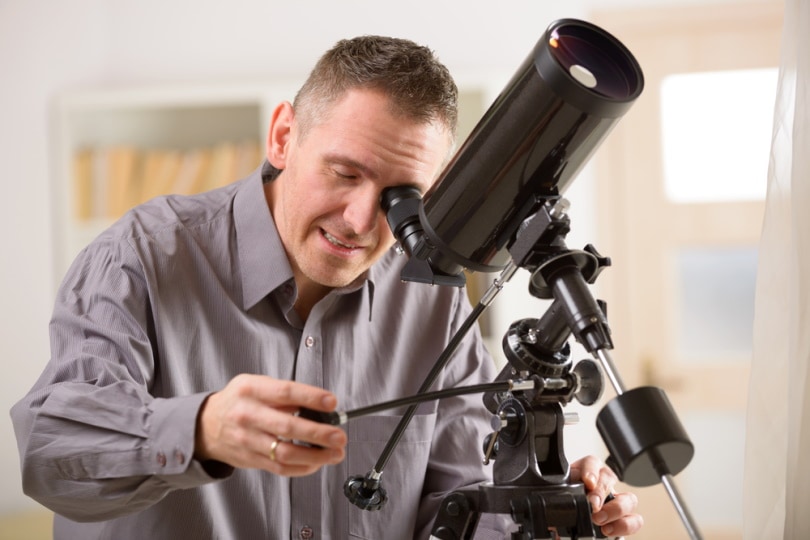
Using a telescope to peer into the night sky can be a fascinating experience, but there are several obstacles that lie between the cosmic ether and our view of it. Factors such as the atmosphere, your telescope’s optical system, and even your own eyes can influence the quality of your observing experience.
Starlight makes a long journey through a dynamic atmosphere before reaching your eyes, so it is essential to ensure your telescope is set to an optimal magnification each time you use it. Each telescope has a useful magnification range that depends on its aperture, optical design, the object you’re looking at, the atmospheric conditions, and your eyesight. Let’s take a look at some of the basics so you can get to calculating the correct magnification for your telescope in no time.

How Does a Telescope Work?
Before setting up your telescope, it is crucial to know the basics of how it works. Most ground-based telescopes are used to observe incredibly far objects in the night sky. Because the objects you’re observing are far, they may appear very faint to the naked eye. A telescope’s job is to collect and magnify the faint light emanating from distant objects so we can better see them.
A telescope accomplishes this by using a series of lenses or mirrors that focus the light into your eye, making it seem as if the object is much closer to you than it actually is. The quality with which we can observe a distant object is based on how much light the telescope can collect, which is determined by its aperture or the variable opening through which the light enters.

Before You Start: Optical Terminology
Before you start calculating your telescope’s magnification, let’s go over some basic optical terminology to help set you up for success.
Telescope Magnification
The magnification of a telescope is determined by the eyepiece. Luckily, most telescopes come with various eyepieces, enabling you to manually change your telescope’s magnification. Much like a microscope, an eyepiece magnifies your objective’s image and focuses the light into your eye. The eyepiece’s operating principle is similar to that of a magnifying glass as it enables your eye to focus on small objects with great precision.
An important thing to note is that as the magnification of an object is increased, the viewing area of your telescope is decreased. As a result, it is important to first use the eyepiece with the lowest magnification so you can easily focus your telescope on the desired target.
Once your telescope is aligned with your target, you can interchange the eyepieces to magnify it further. Generally,the maximum useful magnification of a telescope is 50 times its aperture in inches. Thus, if your aperture is 3 in., the maximum useful magnification of your telescope would be 150x. If you were to magnify your target image any more than this, it would become dim, fuzzy, and lose quality. This isn’t necessarily a hard rule, as stable atmospheric conditions may allow you to magnify your image further without sacrificing quality.
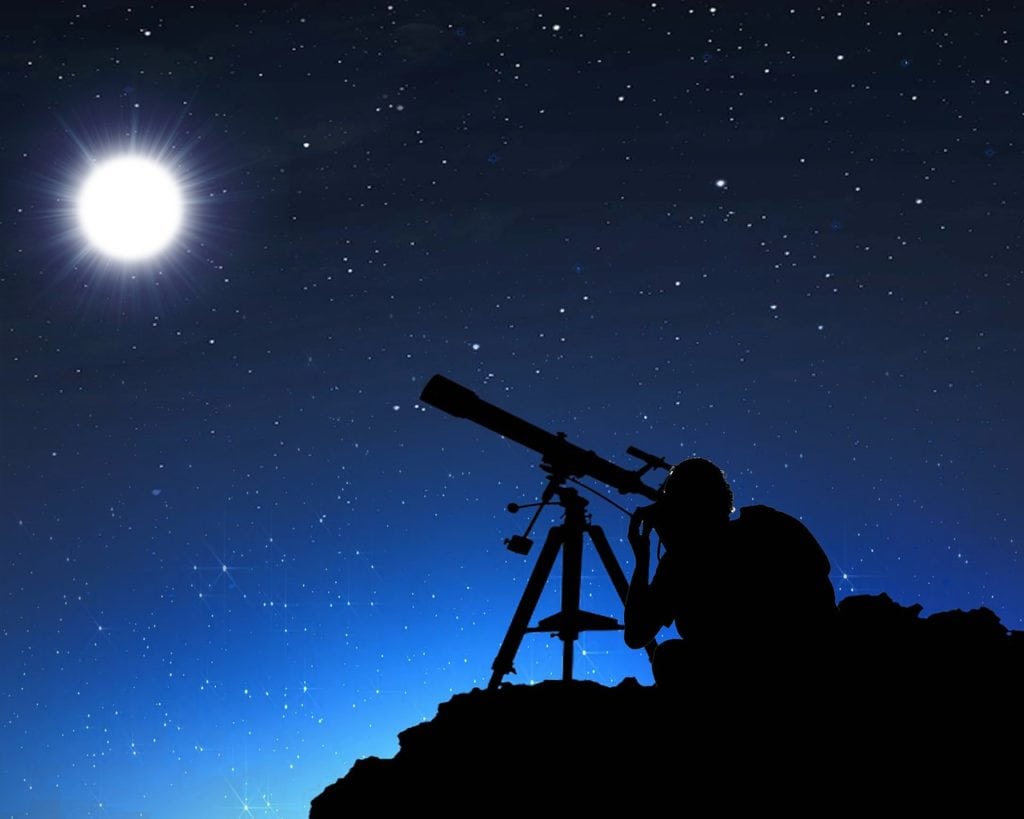
Eyepiece Focal Length
Choosing the best eyepiece is highly dependent on what target you want to observe. Eyepieces come in a variety of focal lengths which categorizes them into low, medium, and high-power models. There is an inversely proportional relationship between the focal length of your eyepiece and your telescope’s magnification. Thus, the smaller the focal length of your eyepiece, the greater it will magnify your target.
Low-power eyepieces are a good choice for observing large objects or multiple objects at once. It is always recommended to first use the lowest power eyepiece available for your telescope, so it is easy to find your target. Medium-power eyepieces are good for observing extended celestial objects such as nebulas, clusters of stars, and galaxies. High-power eyepieces offer the most magnification and are great for observing the intricate details of smaller objects such as the Moon and other planets. Another advantage of high-power eyepieces is their ability to improve the contrast of your image by darkening the sky behind it.
Telescope Focal Length
Your telescope’s focal length is the distance between its main optic and the point where the image is formed. If your telescope’s focal length is small, you can expect to have a wide field of view and lower magnification. However, if your telescope’s focal length is large, your field of view will be smaller, but your target object will appear larger.
Thus, short focal lengths are great for observing large or multiple objects at once, while long focal lengths are good for observing fine details such as the craters on the Moon. A telescope’s focal length is fixed, so it is important to choose one that will suit the type of observation you are interested in.

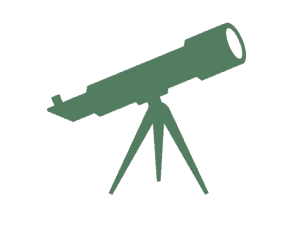
How to Calculate Telescope Magnification – The 3 Basic Steps
Calculating your telescope’s magnification is an essential part of having a quality observation experience.
1. Find Your Telescope’s Focal Length

To begin calculating your telescope’s magnification, you must first find your telescope’s effective focal length. Most telescopes are advertised with a certain focal length in mind, which makes it easy to determine. Otherwise, check the operator’s manual to determine your telescope’s focal length. This value is usually given in millimeters.
2. Obtain Your Eyepiece’s Focal Length
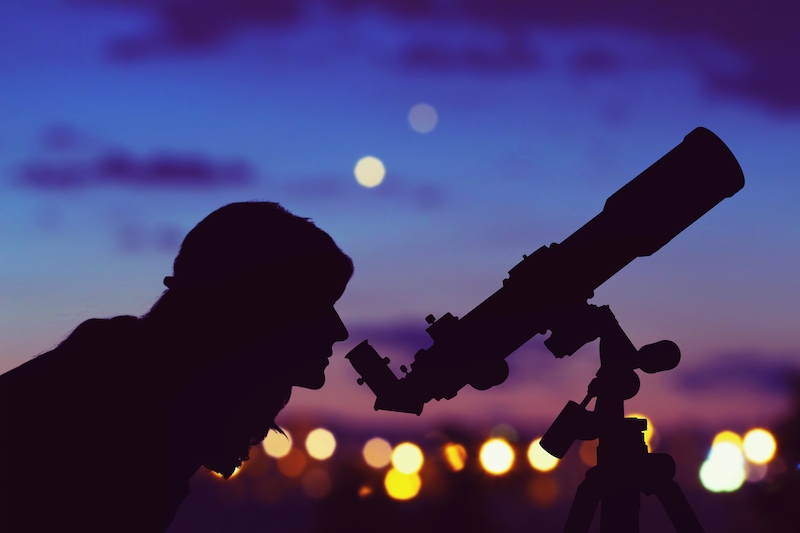
Next, you must find the focal length of your eyepiece. Most eyepieces are labeled with their focal length, so finding it shouldn’t be a problem. Eyepieces that come with your telescope are also conventionally labeled with the magnification they provide, which usually looks like a whole number followed by an “x” (i.e., 60x indicates an image magnification of 60 times).
3. Calculate Your Telescope’s Magnification
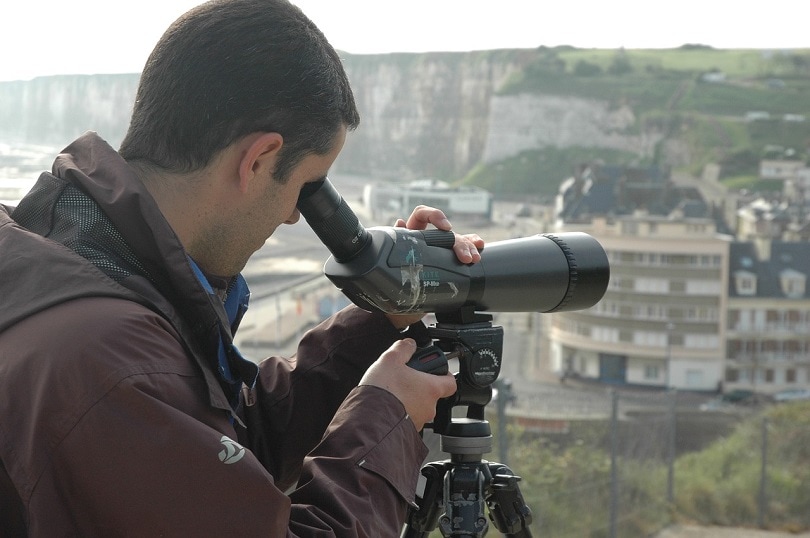
To begin calculating your telescope’s magnification, grab a calculator and keep it handy. The formula for telescope magnification is really simple and is the focal length of your telescope divided by the focal length of your eyepiece.
In order to obtain an accurate result, it is important to maintain the same units of measurement throughout your calculation. If your telescope’s focal length is given in millimeters (i.e., 1,000 mm.), make sure your eyepiece’s focal length is also in millimeters. If it isn’t, there are plenty of conversion calculators available online that can help you convert between any unit of measurement. Take a look at the following examples to practice and get a hang of calculating your telescope’s magnification.
| Telescope Focal Length | Eyepiece Focal Length | Magnification |
| 1,000 mm. | 10 mm. | 100x |
| 1,500 mm. | 20 mm. | 75x |
| 2,000 mm. | 30 mm. | 66.67x |

In Conclusion
Although the terminology surrounding optical systems can sound complex, calculating your telescope’s magnification is simpler than ever. All you need before you start is your telescope and eyepiece’s focal lengths. Once you have these values, finding your telescope’s magnification is simply a matter of dividing your telescope’s focal length by your eyepiece’s focal length. Now that you know the basics, you can easily calculate the correct magnification for observing distant stars, galaxies, the craters on the Moon, or even the kaleidoscopic bands of Jupiter.
Featured Image Credit: Monika Wisniewska, Shutterstock
About the Author Robert Sparks
Robert’s obsession with all things optical started early in life, when his optician father would bring home prototypes for Robert to play with. Nowadays, Robert is dedicated to helping others find the right optics for their needs. His hobbies include astronomy, astrophysics, and model building. Originally from Newark, NJ, he resides in Santa Fe, New Mexico, where the nighttime skies are filled with glittering stars.
Related Articles:
How to Clean a Refractor Telescope: Step-by-Step Guide
How to Clean a Telescope Eyepiece: Step-by-Step Guide
How to Clean a Rifle Scope: 8 Expert Tips
Monocular vs Telescope: Differences Explained (With Pictures)
What Is a Monocular Used For? 8 Common Functions
How to Clean a Telescope Mirror: 8 Expert Tips
Brightfield vs Phase Contrast Microscopy: The Differences Explained
SkyCamHD Drone Review: Pros, Cons, FAQ, & Verdict
